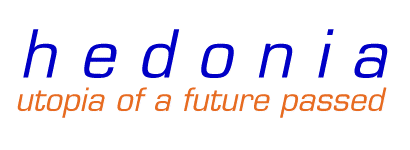

the space stationAttilio Mineo - "Man in Space with Sounds"If you can find any of Attilio Mineo's works, purchase them, for they are certain to be among the classics of the 1950s-'60s futurist-exotic subgenre. One must-have recording is that which he composed in 1959 and was performed in 1962 at the Seattle World's Fair. It was played in the "bubbleator" - a 150-passenger bubble-topped elevator that moved through the "World of Tomorrow" exhibit. This is the only music that could have been played in such an environment! At turns mysterious, ominous and stirring, it is an unparalleled suite of space-age tone poems. The CD reissue on Jack Diamond's brilliant Subliminal Sounds label has the twelve movements with -- and without -- the original narrative introductions, as well as some fascinating liner notes. Raymond ScottRaymond Scott (born Harry Warnow) was an unheralded genius and a father of modern electronic music. Originally a pianist and later a composer with the CBS Radio Orchestra, he eventually formed his own band: the Raymond Scott Quintette. The Quintette hit it big, and was soon scoring --- as well as appearing in - films. The income from his record sales and other projects allowed him to build up a state-of-the-art sound studio in his 4-storey home. One entire floor was wall-to-wall multi-track tape decks, sound generators and other specialized equipment. He hired the young Bob Moog to build sound processing equipment to his design, making the first sequencers and many of the first analogue synthesizers. Scott's ideas for the possibilities of sound-making led to doing electronic sounds for hundreds of commercials, hundreds of Warner Brothers cartoons, as well as the first "ambient" record: "Soothing Sounds for Baby", an album created to pacify infants with comforting sounds. This album, as well as many other works (even collections of his commercial jingles and incidental music for cartoons) has been reissued and gives a fascinating glimpse into the creative ferment of an amazingly prolific and advanced man. Isao TomitaTomita (as he is simply known) is a giant in the history of synthesized music. While synthesizers were still a novelty, used mostly for sound effects, Tomita (along with Wendy Carlos) was one of the first to treat them like serious instruments for serious music. His collection of Debussy pieces titled "The Snowflakes are Dancing" from 1974 is the first example I can think of, of synthesized music doing credit to a classical work. His take on Gustav Holst's "Planets Suite" is equally impressive. Plus, you've got to love any record that shows the musician's huge Moog synthesizer on the back cover and carefully lists all of the modules he used! Bruce HaackBruce Haack's name must be mentioned in any list of early futuristic music (how's that for a subgenre?) if for no other reason, because he was so ignored and marginalized during his lifetime. In the 1950s through 1970s, Haack wrote music quite unlike any other. As early as 1955, he wrote the score for a ballet called "Les Etapes" that used tape loops and electronically-generated sounds. The next year he composed, performed and recorded a musique concrete piece called "Lullaby for a Cat". Since synthesizers were not available at that time, he made his own by trial and error (he had no training in electronics) and over the course of his life, made dozens of different synths. An abiding interest of his was the education of children (probably due to his own lonely and restrictive boyhood) and he became the accompanist for the Esther Nelson School of Dance. Here he was able to give children a chance to express themselves through movement, encouraged by music - something he later did with his recordings as well. He also was given the opportunity to score and perform music for many commercials, especially for games. He also founded his own record label: Dimension 5, which still exists, some 15 years after Haack's death. In all, he made around ten albums, mostly of original children's songs, but also a couple of psychedelic concept albums. In some ways, Haack prefigured the "krautrock" movement of the late '60s, and in others, he was the most progressive proponent of children's music. In all respects, he was a true original. 101 Strings - "Astro Sounds from Beyond the Year 2000"Don't let the group's name or reputation for treacly easy-listening put you off: this is hardcore space-age exotica! Released in 1969, it is chock-a-block full of hyperactive strings, driving rhythms and more bass than you might expect. If there had been a discotheque scene in Barbarella, they would've been playing this record! As a bonus, the CD reissue on Scamp includes 3 "erotic" tracks recorded around that same time, that feature lots of breathy female gasping and moaning and the occasional punctuation of a whip! Klaus Wunderlich - "Sound 2000: Moog, Organ, Rhythm"Cashing in on Moog Madness in 1973 was German organmeister Klaus Wunderlich. His effort is, nonetheless, a hoot, filled with bubbling, wheezing synth leads. "Corn-flakes" barely skirts the hit ditty "Popcorn's" copyright, while other tunes such as "Cherokee" are pleasingly goofy. Adding to the appeal is the back cover photo of Wunderlich posing proudly in black tie in front of his mighty modular. the cabaña the lounge the cabaret the jazz club the conservatory the concert hall the trip the screening room |